This post is mostly about judo shiai, or competition rules.
There are four ways to get an ippon in judo – three of them are on the ground. Throw, pin, choke, and armbar (nage-waza, osaekomi-waza, shime-waza, and kansetsu-waza). So, while excellent throwing skills will always be very important, it would be silly to neglect your newaza (newaza meaning all groundwork).
How do we get from standing into groundwork?
From the official rulebook of the International Judo Federation, page 27 (PDF):
ARTICLE 16 – Entry into Newaza1. The contestants shall be able change from Tachi-waza to Newaza as far as it is done by one of the cases referred to in this Article. However, if the technique used is not continuous, the Referee shall announce Mate and order both contestants to resume the fight from the standing position.2. Situations that allow the passage from Tachi-waza to Newazaa) When a contestant, after obtaining some result by a throwing technique changes without interruption into Newaza and takes the offensive.b) When one of the contestants falls to the ground, following the unsuccessful application of a throwing technique the other may take advantage of his opponent’s position to take him to the ground.c) When one contestant obtains some considerable effect by applying a Shime-waza or Kansetsu-waza in the standing position and then changes without interruption to Newaza.d) When one contestant takes his opponent down into Newaza by the particularly skillful application of a movement which does not qualify as a throwing technique.e) In any other case where one contestant falls down or is about to fall down, not covered by the preceding sub-sections of this article, the other contestant may take advantage of his opponent’s unbalanced position to go into Newaza.3. ExceptionsWhen one contestant pulls his opponent down into Newaza not in accordance with Article 16 paragraph 2 and his opponent does not take advantage of this to continue into Newaza, the Referee shall announce Mate, and penalise with Shido the contestant who has infringed Article 25.7.If the opponent takes advantage of the action of Tori, the Newaza work may continue.
Let’s cover each of these situations, starting with the most common – 2a: “When a contestant, after obtaining some result by a throwing technique changes without interruption into Newaza and takes the offensive.” See the video below:
https://youtu.be/eJT7qwz-xNs?t=1m40s
Blue obtained “some result” meaning a score that isn’t a match-ending ippon (wazari or yuko), then follows up right away with a pin and holds for the additional wazari. Two wazari equals ippon, match over.
Now let’s look at 2b – ” When one of the contestants falls to the ground, following the unsuccessful application of a throwing technique the other may take advantage of his opponent’s position to take him to the ground.”
White goes for an unsuccessful harai makikomi. Blue attempts a counter throw. No score is awarded for the throw, but Blue quickly transitions to the pin and holds for ippon. Again the guiding principle according to the IJF rules is that the action is continuous.
Next we have 2c: “When one contestant obtains some considerable effect by applying a Shime-waza or Kansetsu-waza in the standing position and then changes without interruption to Newaza.”
Very nice flying armbar! Tight application means White obtained “some considerable effect” in the standing position and had Blue tapping before he even hit the ground.
NOTE: It is not allowed to attack the joint in such a way that the person has no chance to tap. The technique demonstrated above is very skillful and although tight, does give the uke a chance to tap before serious damage is done.
And finally we have 2d: “When one contestant takes his opponent down into Newaza by the particularly skillful application of a movement which does not qualify as a throwing technique.”
And there we go! Not exactly a throw, even though White lands on his back. So no score, but Blue gets up quickly and applies juji-gatame for the win.
Transitions from standing to the ground are an important skill. For beginners and intermediate students I recommend concentrating exclusively on the first two categories – following up a throw, partially successful or not, your throw or your opponent’s, with newaza. Don’t stop until you hear ippon or matte. Intermediate/advanced players can start to work on the other categories – applying chokes or armbars from standing or using other skilled methods of entering newaza.
Even if, as a competitive judo player, you prefer standing work, it’s important to know about these techniques so you are familiar with them when someone tries them on you.
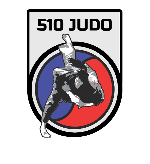
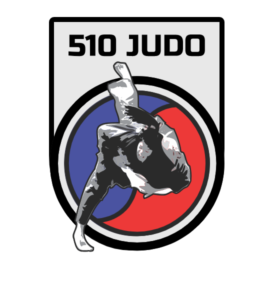

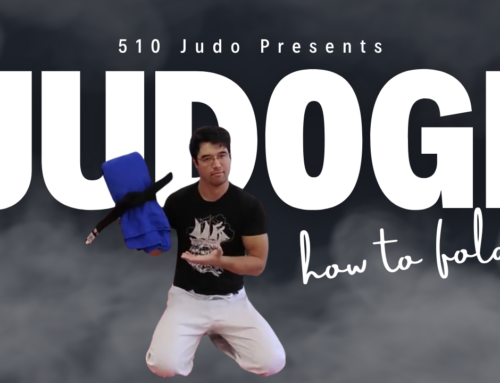
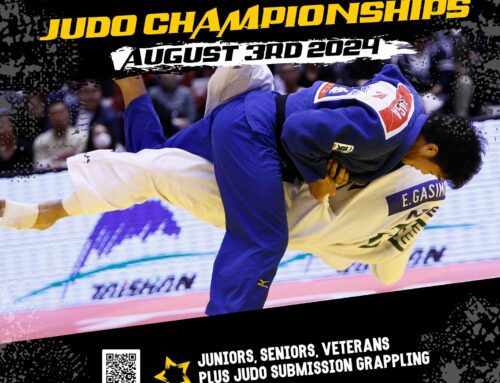
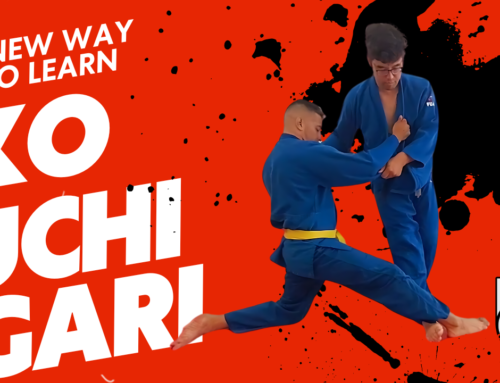
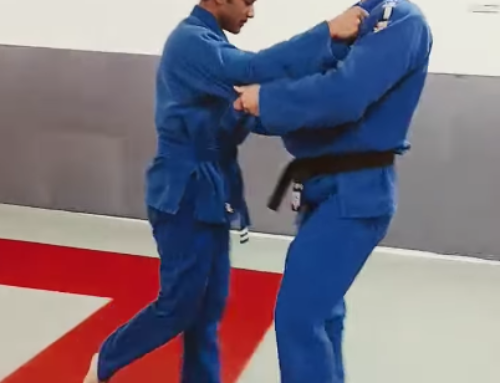
[…] Skillful Entry into Newaza – Transitions. […]